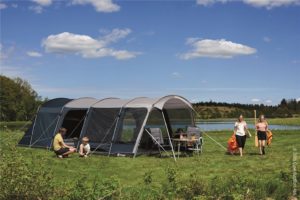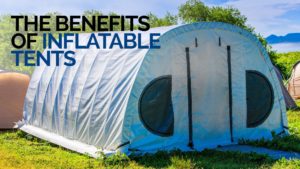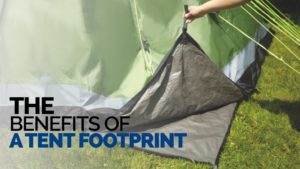
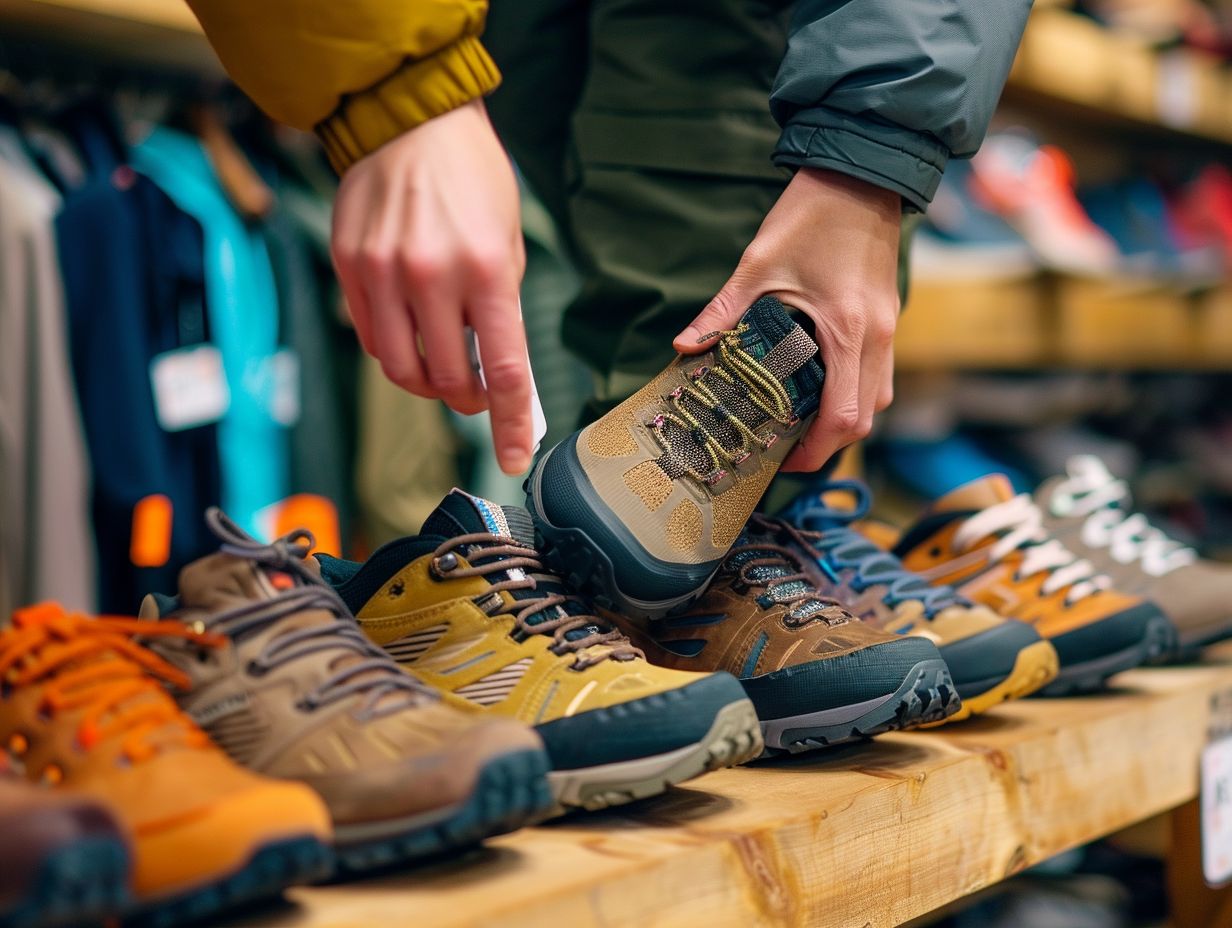
Vaibhav
- Categories: Hiking
When it comes to hiking, choosing the right footwear can make a world of difference in your comfort and performance on the trails.
Factors such as terrain, weather, and personal foot characteristics all play a role in determining the best hiking footwear for your needs.
We will explore the importance of selecting the right hiking footwear, what factors to consider when making your choice, the different types of hiking footwear available, and tips for choosing the right fit and size.
Lace up your boots and let’s hit the trails!
Key Takeaways:

- Proper hiking footwear is crucial for comfort, support, and safety on the trail.
- Consider terrain, weather, personal foot characteristics, and activity level when choosing hiking footwear.
- Try on shoes in the afternoon, wear appropriate socks, and walk to test for comfort and support. Invest in quality and break in new footwear before a long hike.
What Factors to Consider When Choosing Hiking Footwear?
When selecting hiking footwear, it is essential to consider several key factors to align with the particular requirements of your hiking itinerary. These factors may include:
- the type of terrain you will be traversing
- prevailing weather conditions
- anticipated hiking distance
- individual foot characteristics
- your overall level of physical activity
1. Terrain and Trail Conditions
The selection of hiking footwear is heavily influenced by the type of terrain and trail conditions that individuals are expected to encounter. Various soles and grip patterns are specifically crafted to address diverse surfaces.
When confronted with rocky surfaces, it is imperative to utilise robust boots equipped with durable outsoles and heightened traction to ensure stability and minimise the risk of slippage. Renowned brands such as Altra and Salomon offer specialised hiking boots that feature rugged soles engineered to effectively navigate challenging terrains.
In contrast, on muddy trails, footwear with deep lugs and aggressive tread patterns prove to be highly effective in offering traction and preventing the accumulation of mud. For traversing flat terrains, trail runners equipped with increased cushioning and lighter construction are recommended to uphold comfort and enhance speed over prolonged distances.
2. Weather and Climate
Anticipating the weather and climate conditions expected during hikes are crucial considerations when selecting appropriate footwear, particularly with regards to the necessity of waterproof features and breathability. This becomes especially pertinent in winter hiking or wet climates.
Opting for footwear constructed from waterproof and breathable materials, such as Synthetic Materials and Waterproof Membrane, can significantly impact the hiking experience. The capability of such materials to repel water while facilitating the escape of sweat plays a vital role in maintaining dry and comfortable feet, even in demanding conditions.
In winter hiking scenarios, characterised by common occurrences of snow and slush, the presence of waterproof shoes with insulated linings becomes imperative to prevent cold and damp feet. Similarly, in wet climates, shoes incorporating quick-drying materials and anti-microbial treatments prove beneficial in keeping the feet warm and free from odours, despite the damp surroundings.
3. Hiking Distance and Duration
The selection of appropriate footwear for hiking is heavily influenced by the distance and duration of the hiking trips. Longer hikes require footwear that offers increased comfort, support, and often lightweight features to mitigate fatigue.
During extended hikes, especially those covering several miles or spanning multiple days, it becomes imperative to prioritize footwear that provides superior support and cushioning. Boots and lightweight trail runners are popular options for such rigorous excursions, as they deliver the necessary stability for navigating challenging terrains while ensuring comfort.
Maintaining lower weight on the feet is crucial for sustaining energy levels throughout the hike and reducing the likelihood of premature fatigue. Opting for well-designed, supportive footwear enables individuals to focus on enjoying the scenic outdoors without experiencing discomfort or strain.
4. Personal Foot Characteristics
The characteristics of an individual’s feet, including arch type, toebox width, and heel height preferences, are vital factors in the selection of appropriate hiking footwear. This process may also require consultations with a podiatrist or the use of orthotics to ensure optimal support.
The arch type of the individual determines the necessary level of support from the shoe. High arches necessitate additional cushioning and stability features, while flat feet may benefit from increased arch support.
The width of the toebox is critical for allowing proper toe splay during movement, promoting comfort, and preventing conditions such as bunions or pinched toes.
Seeking guidance from a podiatrist can offer personalised recommendations on orthotics tailored to address specific foot concerns, such as plantar fasciitis or overpronation.
Adjustments in heel height are essential for enhancing gait biomechanics and minimising strain on the feet and ankles during hiking activities.
5. Activity Level and Intensity
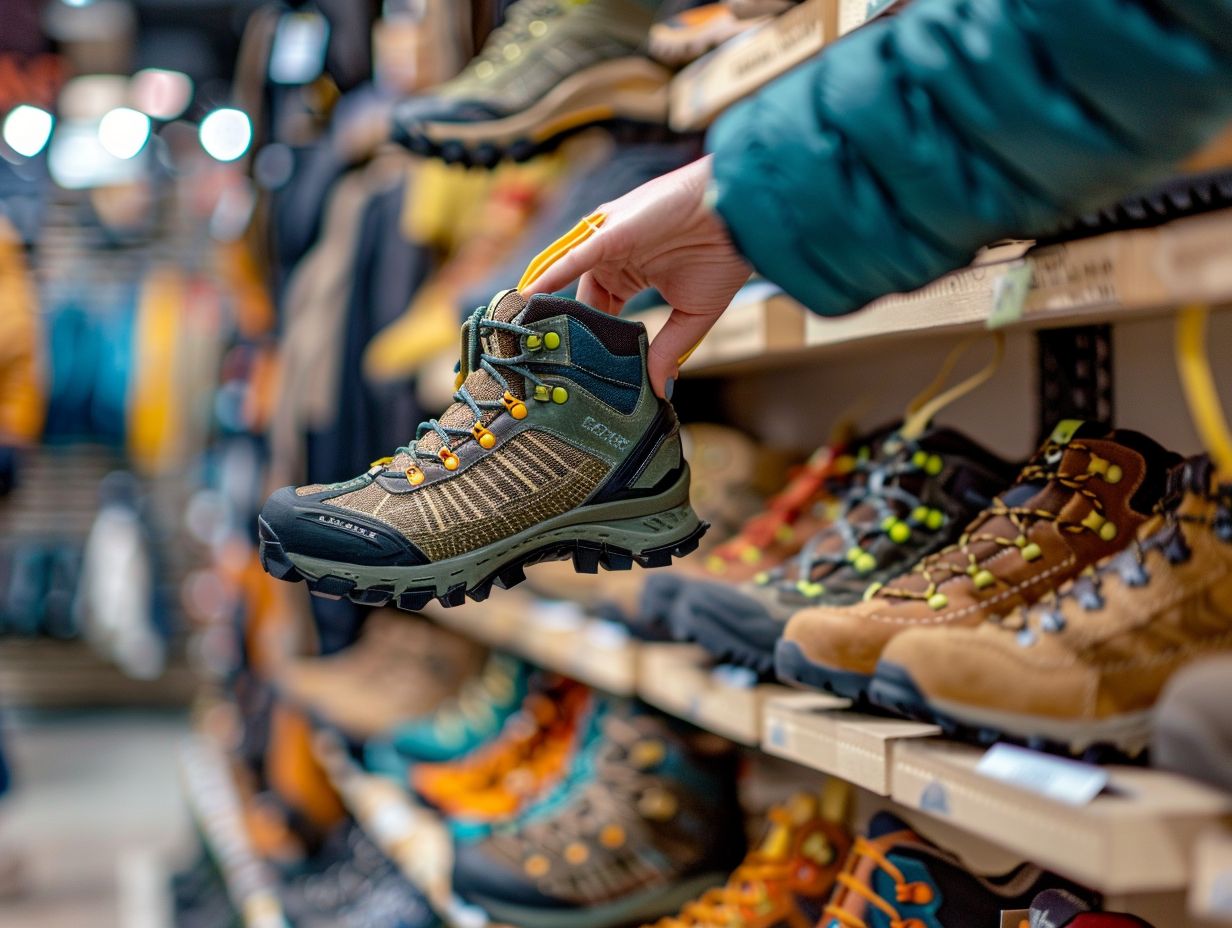
The selection of footwear is influenced by your activity level and the intensity of your hiking or trail running excursions. Specifically, activities such as fast hiking or intense trail running necessitate greater support and flexibility in the soles of the shoes.
Fast hiking involves traversing more terrain at an accelerated pace, thus requiring robust footwear with significant ankle support and a durable outsole to withstand rough terrain. Conversely, trail running calls for lightweight and flexible footwear that facilitates swift movements and adaptability to varying surfaces.
Matching your footwear to the demands of your activity not only improves performance but also mitigates the risk of injuries like ankle sprains or blisters.
Types of Hiking Footwear
There are various categories of hiking footwear tailored to address the distinct requirements of diverse hiking pursuits and individual preferences. These categories include Hiking Boots, Hiking Shoes, Trail Runners, Sandals, and Approach Shoes, each characterised by differences in weight, materials used, and grip capabilities.
1. Hiking Boots
Walking boots are widely recognised for their sturdy support and long-lasting quality, known to deliver exceptional ankle support and being offered in mid and high boot styles crafted from materials such as leather and synthetic options.
Mid boots are well-suited for everyday hiking on moderate terrains as they provide adequate ankle stability without excessive weight. Conversely, high boots are recommended for more challenging hikes across rugged terrains with heavier loads, offering enhanced protection and ankle stability.
In terms of material options, leather boots are favoured for their resilience and water-resistant properties, whereas synthetic boots are characterised by their lightweight construction and often more budget-friendly pricing, making them a popular choice among casual hikers.
2. Hiking Shoes
Hiking boots represent a lightweight and comfortable footwear option preferred by individuals who value sole flexibility and breathability. Many models are equipped with waterproofing capabilities to enhance protection.
These attributes render hiking boots adaptable to a variety of hiking conditions. In arid and warm climates, the breathable materials aid in averting feet from becoming excessively warm and sweaty, thereby diminishing the likelihood of blisters and discomfort.
Conversely, waterproofing plays a pivotal role when navigating through damp or muddy terrains, safeguarding your feet against moisture and ensuring dryness. The lightweight construction of hiking boots also aids in reducing fatigue, permitting individuals to trek extended distances without the burden of heavy footwear.
The amalgamation of comfort, flexibility, breathability, and waterproofing establishes hiking boots as a pragmatic selection for outdoor enthusiasts.
3. Trail Runners
Trail running shoes are specifically crafted for individuals involved in fast hiking and trail running activities. They are often characterized by a zero drop design that promotes a natural gait. Prominent brands in this category include Altra, Salomon, and Hoka.
These specialised footwear options offer a reduced or minimal difference in height between the heel and toe compared to conventional running shoes. This design aims to encourage a more neutral alignment and potentially lessen strain on the body.
The zero drop configuration also promotes a midfoot or forefoot strike, which can aid in improving running efficiency and foot strength. Brands like Altra, Salomon, and Hoka are renowned for their trail runners, which are designed to offer traction, stability, and durability crucial for confidently navigating challenging terrains.
4. Sandals
Hiking sandals offer a lightweight and breathable footwear option, particularly suitable for summer hiking on well-maintained trails. They provide a blend of comfort and flexibility that is well-suited for relatively easy terrain.
The lightweight construction of hiking sandals enhances agility and speed when traversing trails, making them a favoured selection among hikers seeking less restrictive footwear with increased flexibility.
Their breathability plays a key role in preventing foot overheating and decreasing the likelihood of blisters caused by moisture accumulation, ensuring that feet remain cool and dry even during prolonged hikes in warm conditions.
It is essential to recognise that hiking sandals may not offer the ankle support necessary for tackling more demanding terrains, potentially leaving the feet more vulnerable to injuries from rocks or debris.
5. Approach Shoes
Approach shoes are specifically crafted for navigating technical terrain and climbing approaches, distinguished by their durable grip and frequent inclusion of a rock plate to augment support and comfort. These specialised footwear options play a crucial role in traversing demanding landscapes en route to the climbing destination.
Their resilient rubber outsoles deliver outstanding traction on diverse surfaces, furnishing stability on rough, irregular pathways. Positioned within the midsole, the rock plate serves to safeguard the foot against sharp rocks and impacts, thereby diminishing discomfort and ensuring a more seamless journey.
The amalgamation of superior grip and protective features enables climbers to advance confidently and efficiently, thereby optimising their overall performance during challenging approaches.
How to Choose the Right Fit and Size
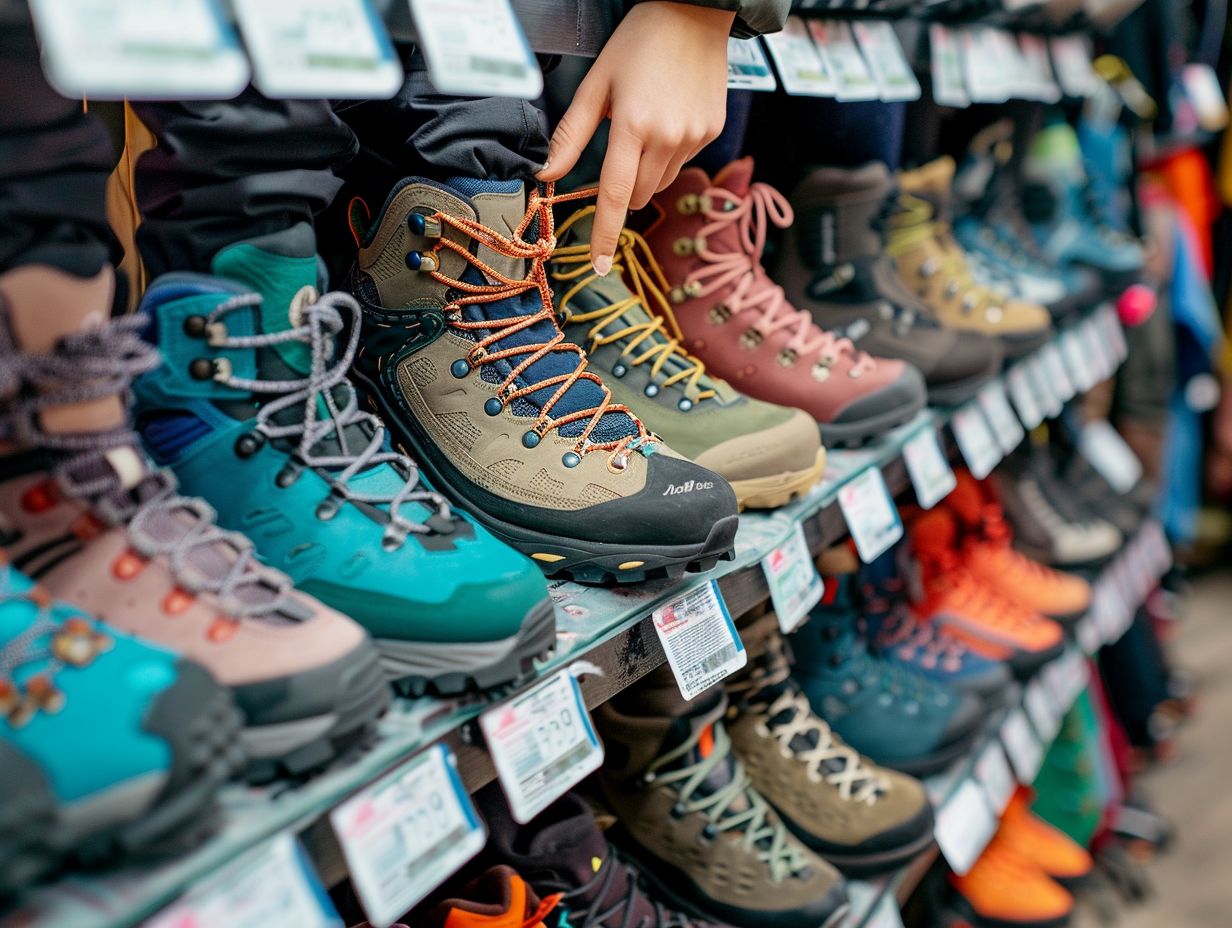
Selecting the appropriate fit and size of hiking footwear is crucial in preventing discomfort and injuries while engaging in hikes. This process entails employing proper fitting methodologies and taking into account factors such as insoles and overall sizing.
1. Try on Shoes in the Afternoon
It is recommended to try on hiking footwear in the afternoon when the feet are naturally more swollen, ensuring a more accurate and comfortable fit.
Throughout the day, with engagement in various activities, there is a tendency for the feet to swell slightly, making the afternoon the optimal time for shoe fitting. Trying on shoes when the feet are at their largest size aids in preventing the purchase of a size too small, which may lead to discomfort in the future.
Proper fitting techniques, such as ensuring adequate space for toe movement and a snug, yet not tight, heel, are crucial in avoiding blisters and injuries during hikes. The effort invested in finding the right fit can significantly enhance the overall hiking experience.
2. Wear Appropriate Socks
Ensuring the use of appropriate hiking socks during the fitting process is essential as it allows the footwear to accommodate the additional layer, leading to a comfortable fit and preventing the occurrence of blisters. These socks play a vital role in managing moisture by effectively wicking away sweat and maintaining dryness in the feet.
Specifically designed for hiking purposes, the correct hiking socks offer cushioning in strategic areas to minimise friction and alleviate pressure points, thereby improving overall comfort during extended hiking trips. By promoting proper blood circulation and providing essential support, hiking socks contribute to a more pleasant and pain-free outdoor excursion.
Investing in high-quality hiking socks can result in a notable enhancement in the performance and enjoyment of your hiking endeavours.
3. Walk and Test for Comfort and Support
It is imperative to walk and test hiking footwear for comfort and support as part of the evaluation process, enabling individuals to gauge the performance of the footwear in conditions reminiscent of their hiking environment.
By replicating hiking conditions during the testing phase, individuals can simulate the terrain, elevation, and challenges akin to those encountered during an actual hike. This method aids in comprehending the footwear’s performance on various surfaces and its capacity to offer stability and cushioning to the feet.
Attention to details such as arch support, ankle stability, and overall fit is crucial during the testing process to ensure that the footwear aligns with the specific hiking requirements of the individual.
4. Check for Proper Toe Room
Ensuring sufficient toe room in hiking footwear is crucial to prevent toe injuries and promote a comfortable fit, especially when traversing downhill terrain. Sufficient space within the toe box of hiking boots encourages natural toe movement, decreasing the chances of blisters, black toenails, and other discomforts commonly experienced during hiking trips.
When choosing hiking footwear, it is recommended to ensure that there is roughly a thumbnail’s width of space between the longest toe and the front of the shoe. This space allows for the natural swelling of the foot that happens during long hikes.
Walking around the shop while wearing the shoes helps individuals to detect any areas of pressure or friction that may cause hot spots and subsequent discomfort during extended treks.
Additional Tips for Choosing Hiking Footwear
In conjunction with fundamental considerations, there exist several supplemental guidelines for the selection of hiking footwear. These include emphasising factors like weight and breathability, guaranteeing waterproofing and durability, acclimatising new footwear through preliminary use before extended hikes, and allocating resources towards high-quality options coupled with appropriate maintenance practices.
1. Consider Weight and Breathability
Considering the weight and breathability of hiking footwear is crucial for ensuring comfort and optimising performance, particularly on extended hikes. Utilising lightweight and breathable materials can minimise fatigue and maintain dryness in your feet.
Lightweight and breathable footwear facilitates improved air circulation, thereby preventing the accumulation of heat and moisture within the shoe. This, in turn, mitigates discomfort and lowers the likelihood of developing blisters.
In environments characterised by high temperatures and humidity, the breathable nature of these shoes aids in regulating foot temperature and decreasing the likelihood of foot-related issues. Moreover, the lightweight design of such footwear reduces the strain on both legs and feet, enabling more efficient and comfortable movement over prolonged hiking expeditions.
Therefore, investing in lightweight and breathable hiking footwear can substantially elevate your outdoor experience across diverse terrains and weather conditions, promoting enhanced comfort and performance.
2. Look for Waterproofing and Durability
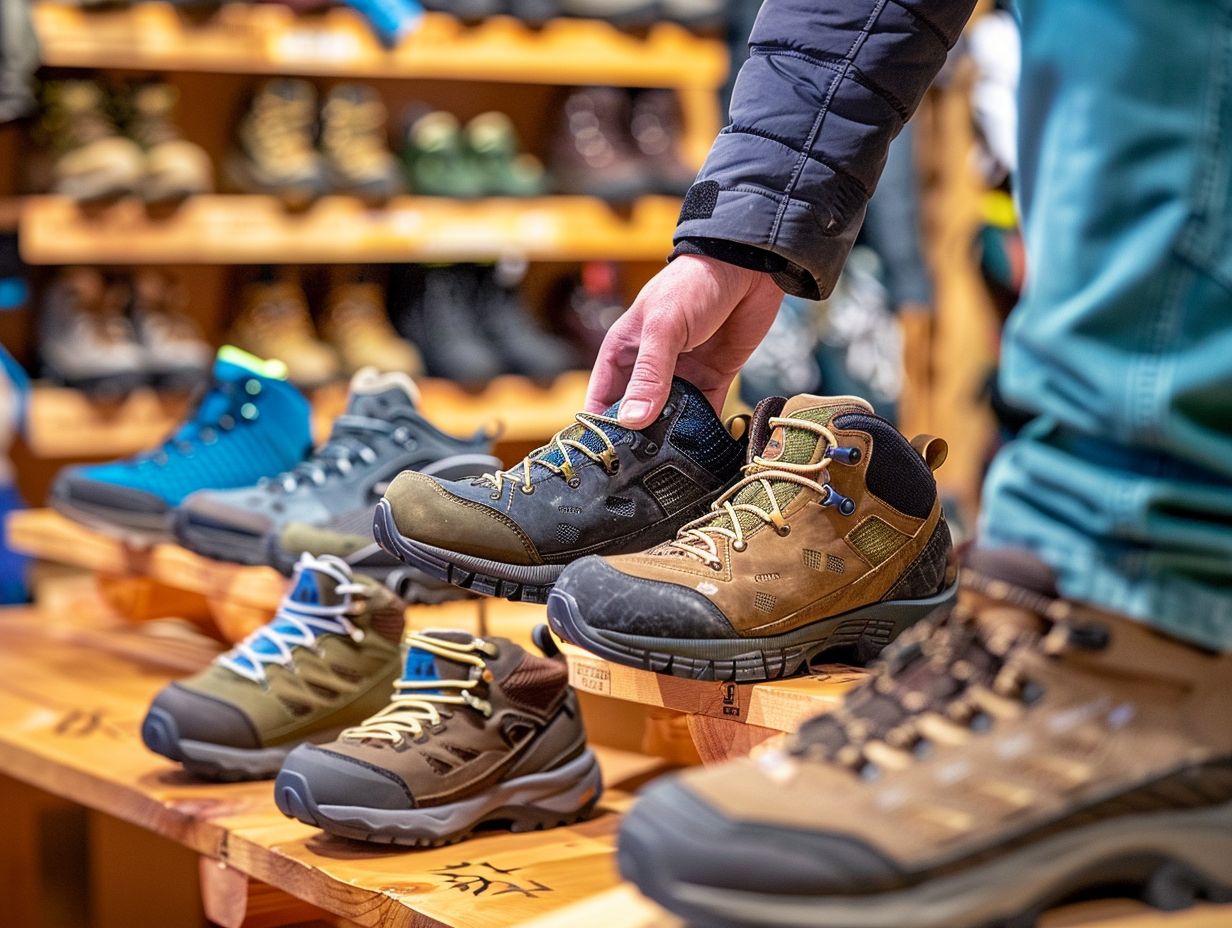
When selecting hiking footwear, it is crucial to prioritize waterproofing and durability as key features. These qualities provide protection against wet conditions and ensure long-lasting performance. Features such as waterproof membranes and synthetic materials can enhance these attributes.
The presence of waterproofing in hiking footwear is essential to maintain dryness and comfort during hikes in rainy or wet environments. Waterproof membranes, such as Gore-Tex, serve as a barrier that prevents water from entering the shoe while still permitting moisture to escape.
This functionality ensures that your feet remain dry and free from external elements as well as perspiration. Hiking shoes crafted from synthetic materials are recognized for their durability and resilience against wear and tear, guaranteeing their ability to endure the challenges presented by various types of terrain during prolonged use.
3. Break in New Footwear Before a Long Hike
It is essential to wear in new hiking footwear before setting off on a long hike to ensure comfort and prevent blisters. This process allows your feet time to adjust to the new boots or trail runners, reducing the likelihood of discomfort.
During the wearing-in period, it is recommended to wear the new footwear around the house or on shorter walks to gradually shape the material to the contours of your feet. This practice helps soften any rigid areas of the boots or trail runners and minimizes the chances of discomfort during longer treks.
Additionally, using hiking socks with moisture-wicking properties is advisable to keep your feet dry and reduce the likelihood of developing blisters. It is important to remember that dedicating time to properly wear in your hiking footwear will ultimately enhance your hiking experience by ensuring comfort and reducing the risk of foot-related issues.
4. Invest in Quality and Proper Maintenance
Making an investment in high-quality hiking footwear and prioritising proper maintenance, including timely repairs, can significantly prolong the lifespan of one’s boots and ensure consistent performance during every hiking excursion.
The presence of quality hiking footwear not only provides fundamental support and protection for the feet on challenging trails but also serves to mitigate potential injuries and discomfort during extended treks.
To uphold the optimal condition of hiking boots, it is imperative to engage in regular cleaning practices after each use to eliminate dirt and mud that may contribute to material deterioration.
Additionally, the application of a waterproofing treatment is essential in enhancing the longevity of the boots by shielding them from moisture and bolstering their resilience against diverse weather conditions.
Frequently Asked Questions
What factors should I consider when choosing hiking footwear?
When choosing hiking footwear, you should consider the terrain you will be hiking on, the weather conditions, the length and intensity of your hikes, and your personal hiking style and preferences.
What type of hiking footwear is best for flat and easy terrain?
For flat and easy terrain, a good pair of hiking shoes will suffice. Look for shoes with a flexible sole and ample cushioning for comfort and support on long walks.
Are hiking boots necessary for more challenging hikes?
Hiking boots are recommended for more challenging hikes, especially those with uneven terrain, steep inclines, or rocky surfaces. They provide better ankle support and protection against rocks and debris.
What are the best materials for hiking footwear?
Hiking footwear is typically made of sturdy and durable materials such as leather, synthetic fabrics, and rubber. Look for materials that are water-resistant, breathable, and provide good traction.
Should I try on hiking footwear before purchasing?
Yes, it is highly recommended to try on hiking footwear before making a purchase. This allows you to test the fit, comfort, and support of the shoes and ensure they are suitable for your feet.
How do I know if hiking footwear is the right size?
The right hiking footwear should feel snug and secure, but not too tight. Your toes should have room to wiggle and your heel should not slip up and down. It is recommended to try on shoes at the end of the day when your feet are at their largest.
Share:
By submitting your email address, you are agreeing to receive marketing emails from theexpertcamper.co.uk.
We’ll never share your email address and you can unsubscribe at any time. Privacy policy
Related Posts

A Seasonal Guide To Hiking In The Peak District
Are you ready to lace up your hiking boots and explore the stunning landscapes of the Peak District? This seasonal guide will take you through

Hiking Challenges Preparing For Your First Ultrahike
Are you ready to take your hiking adventures to the next level? Ultra-hiking offers a unique combination of physical and mental challenges, breathtaking scenery, and

Ecofriendly Hiking Tips For Sustainable Adventures
Are you an outdoor enthusiast looking to minimise your impact on the environment while enjoying the great outdoors? Eco-friendly hiking is the perfect solution! We

The Best Hiking Trails For Experiencing UK Wildlife
When exploring the picturesque hiking trails of the UK, you can expect to encounter a diverse array of wildlife. From majestic birds soaring overhead to

Wildflower Walks The Best Trails For Nature Lovers
Are you a nature lover looking to embark on a wildflower walk? Explore the best trails for wildflower walks, including [Trail Name 1], [Trail Name


